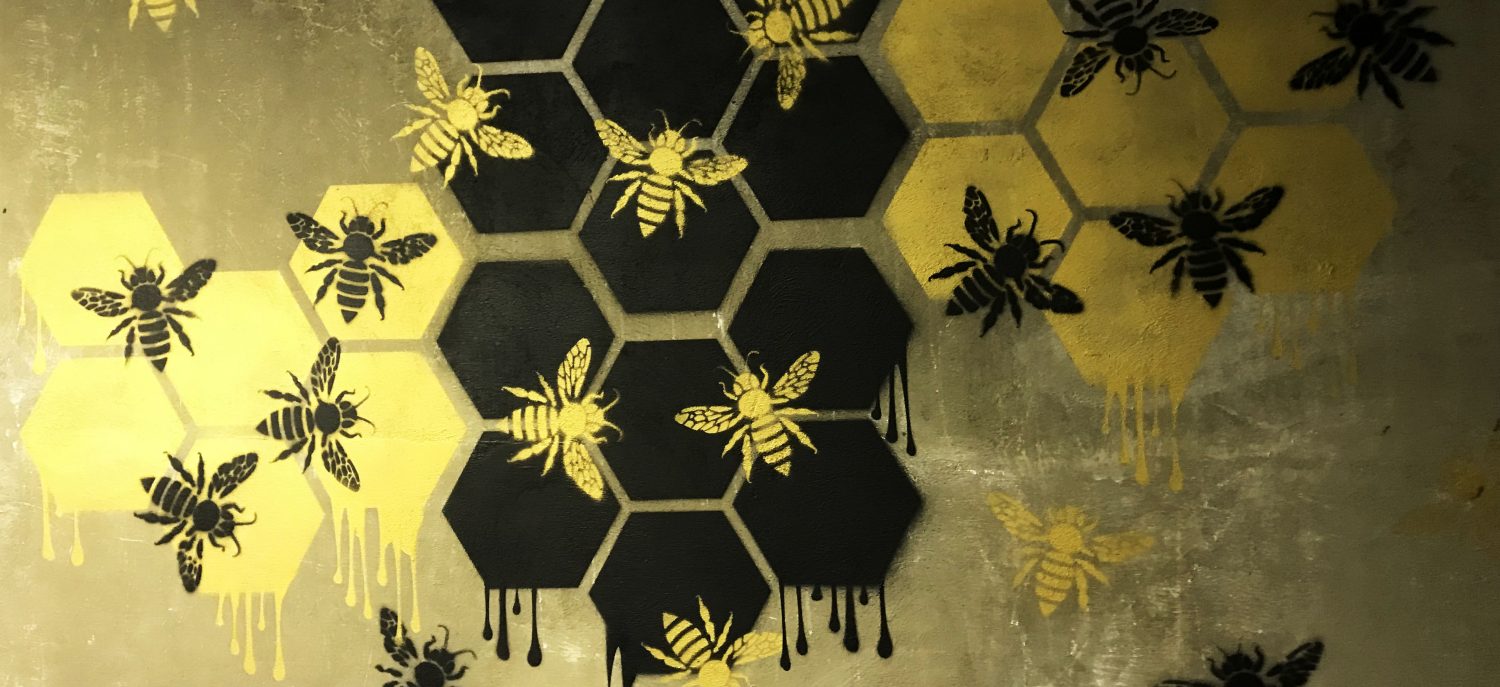Ecological sustainability, culturally, socially and environmentally, as well as in both local and global contexts, is on the minds of faculty and students at Colgate. For the 2017-18 academic year, the required reading for incoming first-year students at Colgate was The Sixth Extinction by Elizabeth Kolbert, who also visited the Colgate campus in the fall of 2017. The 6th E Street, developed from this reading, and focuses on themes of extinction and sustainability in the tunnels that link campus science buildings. Threading through the walls of the Ho/Olin tunnels are images of now extinct animals and proposals for how to foster an ecologically sustainable and resilient future. In the process, a significant cross pollination of ideas and processes are emerging, relating to formal ‘eco-art’ aesthetics, creative problem solving of ecological issues, environmental justice, collaboration, and public art.
This project is the result of a collaboration between Mabel Dart Colegrove Commons and Dr. April Baptiste, the First Year Seminar program and Dr. Jessica Graybill, and the Art & Art History department and artist Margaretha Haughwout. In the spring of 2019, we are excited to collaborate with the Office of the Environment on a reception for the project during their 13 Days of Green. Numerous students have contributed to the conception of the project and its implementation, including Haughwout’s spring and fall 17-18, and 18-19 Basic Studio courses, Graybill’s 2017 FSEM students, and students from MDCC. Art & Art History graduate and Honors student Kimberly Duncan contributed hand drawn portraits of Environmental Justice leaders, a landscape of Colgate University, and to the overall conceptual structure of the project. Arts minor and Creative Writing major Alex Weimer assisted Duncan with visual work and composition over the summer, also conducting research on the bioregion and watershed. Art student Elise Kennedy and Environmental Geography major Claudia Buszta, along with Destiny Sambrano, Joanna Rodriguez, and Charlotte Byrne, collaborated in the academic year 2018/19 to visualize relevant local ecologies that respond to a range of human engagements. In the summer of 2019, Keara Greene and Emma Kaminski continued to research and visualize the project.
